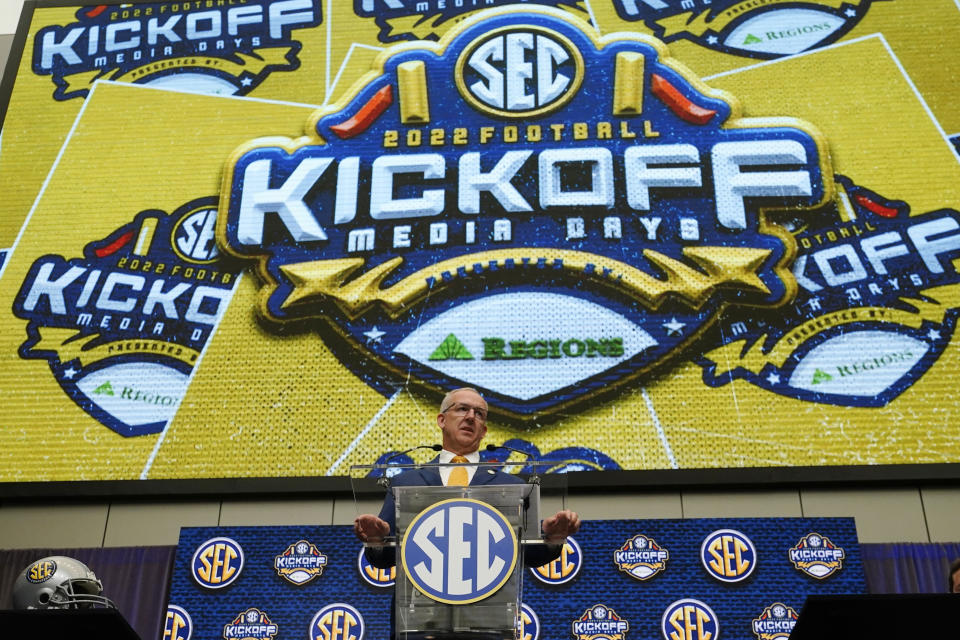Back in January, on the day when two of his schools (Georgia and Alabama) would again compete for the national championship, SEC commissioner Greg Sankey made a final pitch for the establishment of a new College Football Playoff.
It featured 12 teams. The field would be made up of six guaranteed bids to the top six conference champions, plus six more selected by a committee. The top four champs would receive a first-round bye. The opening-round games would be played on the campus of the higher-seeded team, the rest would take place at neutral sites, mostly established bowl games.
With the current four-team CFP model set to expire after the 2026 season, this was a fair, exciting, equitable and highly profitable option for the future.
It was projected to be worth not just $1 billion in future media rights but would also assure the television value of and competitive relevance of each major conference and even help smaller leagues. It would likewise turn major conference title games into hugely valuable de facto playoff games.
This was a life preserver to specific leagues, and the sport as a whole.
Yet the ACC, Big Ten and Pac-12 formed a so-called “Alliance” to block it, puzzling and insulting Sankey and the others who worked on the plan (Bob Bowlsby of the Big 12, Craig Thompson of the Mountain West and Jack Swarbrick of Notre Dame).
Six months later the Big Ten blew the alliance up by raiding the Pac-12 for USC and UCLA.
At this point, the ACC and Pac-12 would crawl across smoldering coals to get Sankey’s 12-team model back on the table.
As those two leagues rack their brains for ways to get more from upcoming media rights negotiations and prop themselves up as perceived equals to the SEC and Big Ten, they can only kick themselves for not taking the golden goose that was offered. Because that deal, or any deal even remotely as good for them, may never be coming back.
Sankey said Monday that the SEC is under “no urgency” to add more teams and destabilize other conferences. However, he made it clear that when it came to the future of the playoff, what was once on the table is now forgotten. It’s a whole new world.
“If we are going to go back to square one then we are going to take a step back from the model that was introduced and rethink the approach,” he said.
The old plan was a compromise. It created a larger, richer playoff by assuring conference champions access without decreasing the number of at-large teams.

